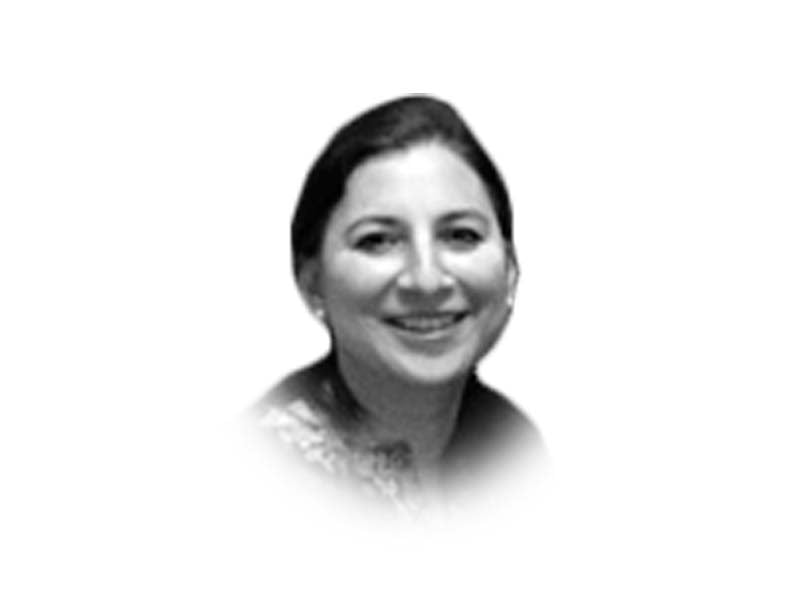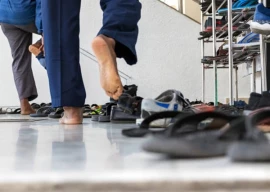
Today’s world is dominated by news of potential nuclear war between America and North Korea, what the media sees as ‘President Trump’s outrageous tweets,’ with President Trump’s accusations of ‘false news’ in return, and the blanket label of ‘terrorism’ which is applied selectively, loosely and specifically to certain religious communities, particularly Muslims — with the Rohingyas taking the brunt of the accusation in an ongoing wave of genocide against them. In this atmosphere of confusion and heightened tensions what messages are we giving our innocent children, our enthusiastic students and ordinary people in this world — who are all looking for calm, peace and hope?
It was in this cacophony that I was invited to a conference in Bangkok, Thailand, from the 29th to 30th of November on Fostering Peaceful and Inclusive Societies in South Asia, organised by the UN Office on Genocide Prevention and the Responsibility to Protect. The aim was to bring in religious leaders and actors from South Asia to work out ways to build peace and cultivate the vital idea of inclusiveness in societies.
Over many years of effort, the UN had drawn up a superb, all-inclusive Plan of Action for Religious Leaders and Actors to Prevent Incitement to Violence that Could Lead to Atrocity Crimes. With its key goals of human rights, sustainable development and peace and security, the UN aimed to “leave no one behind.” This was every government’s responsibility and every person’s commitment to their fellow humanity. Mohamed Elsanousi, the director of the Secretariat of the Network for Religious and Traditional Peacemakers, pointed out that the Marrakesh Declaration was inspired by the inclusive Charter of Madina from Prophet Muhammad’s (pbuh) time in the seventh century, which was the first human-rights charter.
It is a formal legal framework and commitment by 250 Muslim leaders and scholars in 2016 which champions “defending the rights of religious minorities in predominantly Muslim countries.” But now, 1,400 years later, we have rampant religious exclusion and violence in the name of religion. How did this gap emerge?
This important work of peace-building was naturally never going to be easy or easily accepted. Peace-builders have always found themselves on the edge of society, sometimes seen as threats, and never fully understood. The conference itself was intended to be held in India, but the organisers said that in this current climate and given India’s right-wing government, some Indians turned down hosting the conference. However, India was represented, amongst the other South Asian nations, by a pleasant young man from the United Network of Young Peacebuilders called Mridul, a kind-looking nun who belonged to Mother Teresa’s order, a wise Sikh and the Rev David Selvaraj of the Visthar Academy for Justice and Peace, who made some strong points on how we are faced today with walls which, he said, are prejudices as well as the importance of religious leaders using their texts in an intelligent way to heal societies.
But the scene was dominated by Pakistanis, and Elsanousi from Washington, who masterfully conducted the conference and found our table of Pakistani delegates hard to tame. He had lived in Pakistan so he constantly put in ‘Pakistan Zindabad!’ in his address to our table. At this table was seated Dr Shunila Ruth, a vocal Christian Pakistani, Jai Prakash, a seasoned Sindhi Hindu journalist, Dr Sabir, an intelligent blind Christian professor at Karachi University, Dr Ziaul Haq of the Islamic University, an imam called Dr Muhammad Ilyas, just appointed as Seerat chair by the government to promote inclusiveness, Risham, a young creative social media expert from Lahore, Muhammad al Noori and finally myself working on peace education in Pakistan.
We discussed ‘minority’ problems and challenges in Pakistan with passion. We were hard to keep quiet as we all loved Pakistan and, seeking respect for all citizens of Pakistan just as the Quaid-e-Azam had dreamed, we wanted to see positive change and a voice for all religious communities. Prakash said his community had lived in this region now called Pakistan for 5,000 years and he felt deeply connected to its soil. Prakash, Dr Sabir, Dr Ruth and the others all said they were patriotic and worked all their lives for the betterment of their country.
After addressing the challenges, we focused on the many positives happening in peace-building in Pakistan. After I emphasised the need for focusing on both the challenges and the positives, I was voted to represent the Pakistan table. As I recorded the thoughts of the delegates at our table, there were so many positives that I ran out of paper. Contrary to the negative news reports on Pakistan, the reality is that here was a burst of solid good work happening on the ground. The government, I was told, has been vocal on interfaith harmony. They have set up a Ministry for Religious Affairs and Interfaith Harmony. There was another ministry set up for human rights. Out of the National Action Plan an initiative to promote peace came Paigham-e-Pakistan, a policy document for advancing interfaith harmony, which has been signed by 3,000 ulema.
The Pakistan government has made tremendous and consistent efforts to celebrate the festivals of its religious communities. In education at the university level, the Iqbal Institute for Dialogue and Research was set up in Islamabad and at Forman Christian College, I myself set up the Centre for Dialogue and Action to introduce courses on dialogue and respect for humanity. The Higher Education Commission, the Punjab and K-P police academies, Sindh University and the churches, mandirs and gurdwaras make continuous efforts in interfaith dialogue and, particularly the latter, in reaching out, especially to the poor people of all faiths.
I too shared my experience of taking priests, imams and rabbis in Pakistan to engage in interfaith dialogue in the churches located in the slum areas of Islamabad. Dr Sabir informed us about the work of the Karachi-based Interfaith Tree Plantation, which sowed seeds of trees to heal our world and foster peace. In my representation of Pakistan to the conference, I told of the many good works happening in Pakistani society by courageous people. Pakistan has a positive role to play on the national, neighbourly and international scene.
Of course, each country here at the UN conference — India, Pakistan, Bangladesh, Myanmar, and Nepal — had its own voice, challenges and potentials, and although the dialogue here was just a start, I felt it was crucial to share some key questions that remained food for thought: Who was going to implement the action plan that the UN had so thoroughly drawn up? In its panel discussion on the Rohingya genocide, where were the voices of the Rohingyas? The conference featured a wonderful story of a monk who had fought for peace and even been imprisoned for a few years for standing up for peace, but where were the Rohingyas in telling their own story?
The problems of our world and the tackling of genocide was not an easy task for the UN. But this body of six people who dealt with such colossal problems as heinous genocide were undoubtedly heroic, many of them highly intelligent, affable and empathetic women, including Gillian Kitley, Dr Azza Karam, Simona Cruciani, Maria Westergren and, last but not least, Adama Dieng.
Published in The Express Tribune, December 24th, 2017.
Like Opinion & Editorial on Facebook, follow @ETOpEd on Twitter to receive all updates on all our daily pieces.





























































COMMENTS
Comments are moderated and generally will be posted if they are on-topic and not abusive.
For more information, please see our Comments FAQ